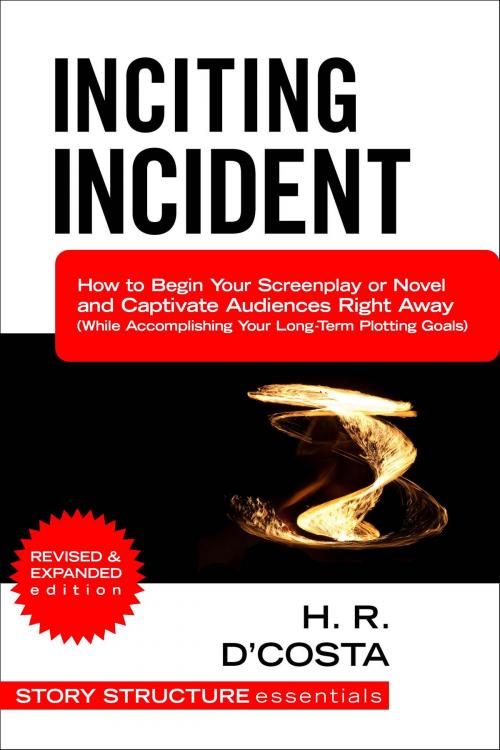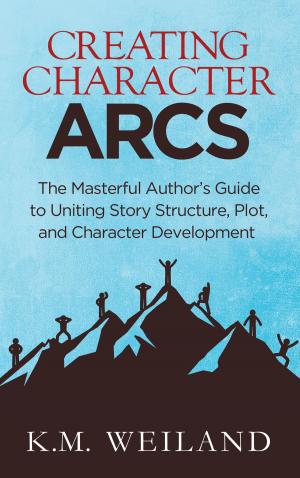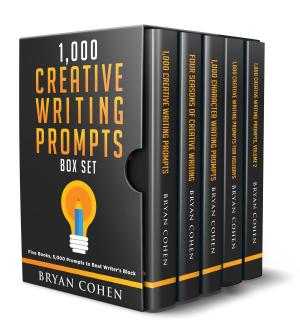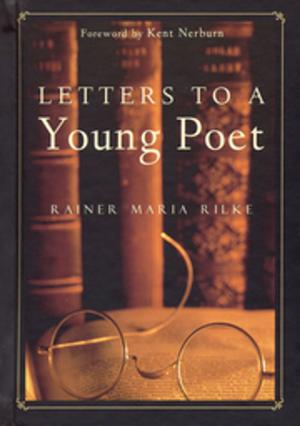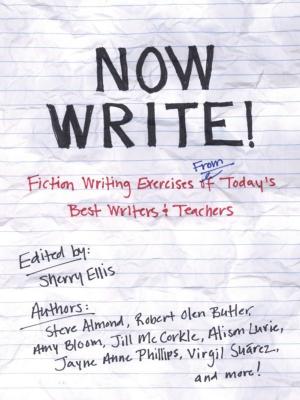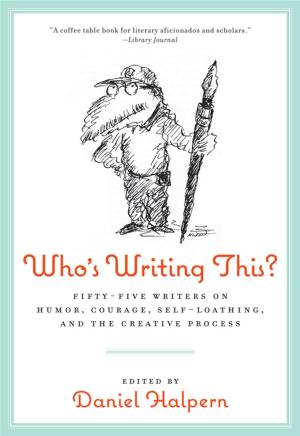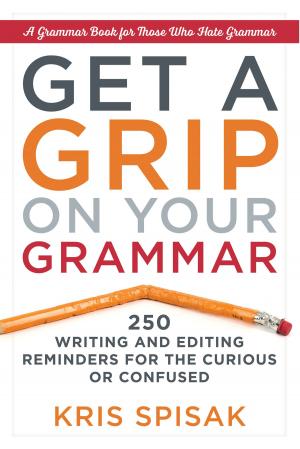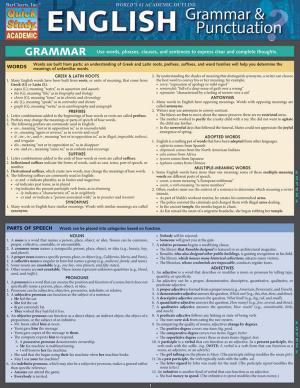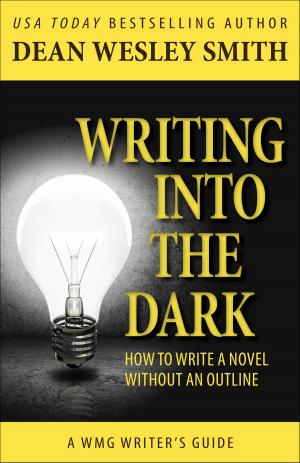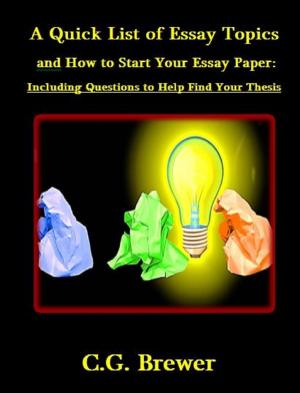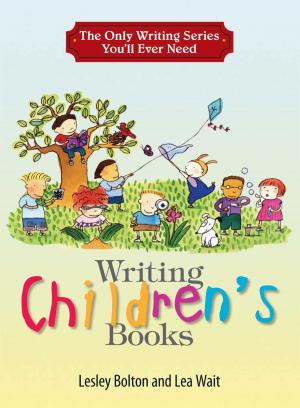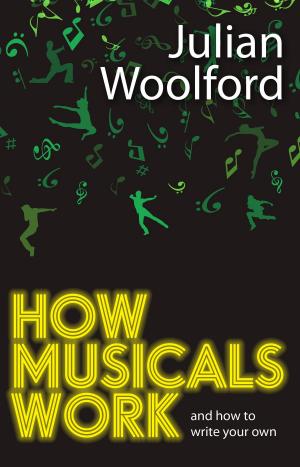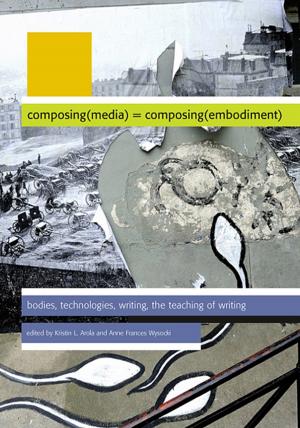Inciting Incident
How to Begin Your Screenplay or Novel and Captivate Audiences Right Away (While Accomplishing Your Long-Term Plotting Goals)
Nonfiction, Entertainment, Film, Screenwriting, Performing Arts, Reference & Language, Language Arts, Writing & Publishing, Composition & Creative Writing| Author: | H. R. D'Costa | ISBN: | 1230000140272 |
| Publisher: | Scribe Meets World | Publication: | June 8, 2013 |
| Imprint: | Language: | English |
| Author: | H. R. D'Costa |
| ISBN: | 1230000140272 |
| Publisher: | Scribe Meets World |
| Publication: | June 8, 2013 |
| Imprint: | |
| Language: | English |
*** REVISED & EXPANDED EDITION
Does Your Story Beginning Set You Up For Success…or Failure?
Beginnings are agonizing to write.
So much is at stake.
If you start your story in the wrong place, if it’s boring or bogged down by exposition, audiences will abandon it right then and there. They’re not going to read further to see if your story gets better down the road.
They don’t have to.
Whether a studio executive, agent, or bookworm, they’re spoiled for choice. They can make quick judgment calls, instantly forsaking your story for one that grabs them right away.
In other words, a well-written beginning is a marketing tool. It helps you sell your story.
But...it has to do more than that. It also has to set up your plot.
It has to lay down the groundwork for your premise (i.e. its basic rules & credibility). Plus, audiences have to get to know your protagonist. They have to get to know the stakes.
Unfortunately, setting your pieces in place (especially the character stuff) tends to be slow. It doesn’t tend to grab audiences. At the same time, it doesn’t do you much good to grab audiences at the beginning of your story…only to lose them later on.
This is the marketing-plotting conundrum.
And boy is it a doozy.
Happily, this writing guide will provide you with two tried-and-true solutions:
*** Solution #1: The Inciting Incident ***
Starting your story and getting it started are two different things.
You start your story on page 1. But this page, along with the ones that follow soon thereafter, can be filled with loads of material: backstory, exposition, “info dumps,” random details.
All of this material is essential for you, the writer.
However, not all of it is (in fact, very little of it may be) essential for audiences, who’re waiting for your story to get started.
Thus, you’ve got to make an incision.
But where?
The inciting incident will tell you.
With this writing guide, you’ll learn how to use the inciting incident to determine whether your story beginning has the kind of pacing and momentum that will attract audiences—or repel them.
However, the inciting incident isn’t the only way to inspire audience confidence…which brings us to:
*** Solution #2: Genre ***
Why do audiences seek out stories?
Audiences are looking for a particular emotional experience, i.e. genre.
When you deliver this experience to them right away, they become reassured that you know what you’re doing. You are worthy of their time.
Because you’ve earned their trust and their patience via genre, they’re willing to extend you the benefit of the doubt when you transition into the slower (but vital) character stuff that follows.
However, while genre is effective, there are plenty of opportunities to go astray. Rest assured, with this writing guide, you’ll know if this solution is the best way to begin your screenplay or novel.
With this book you’ll learn—
*** How to Use Genre & the Inciting Incident to Keep Readers Hooked to Your Story ***
You’ll be able to craft a screenplay or novel beginning that sets up your premise and addresses the “slow” stuff (i.e. likeability and stakes)—but which, at the same time, captivates audiences.
We’ll cover topics like these:
--how much “everyday” world to include before the inciting incident—and when reducing these pages can really backfire (plus 5 tips to make your protagonist’s everyday world more interesting)
--how to time your inciting incident for best effect, including how to delay it without aggravating audiences…and also why it might be wise not to show it at all
--the secret ingredient that made Liam Neeson so appealing in Taken and Ryan Reynolds so attractive in The Proposal (it’s not what you think)
--how to fix a story that starts too fast (rather than too slow)
--8 ways to start your screenplay or novel (and why some “controversial” beginnings might not be as bad as you believe)
--how to tell if your prologue is justified (and the simple labeling trick that may save you loads of grief)
--7 principles for evaluating the merits of the flashforward opener
--an easy fix to organically weave in exposition and avoid those “as you know” conversations that drive audiences crazy
Buy this writing guide today, and learn how to start your story in the right place!
If you’re serious about writing screenplays and novels that audiences will love, take a look at:
Story Stakes: Your #1 Writing Skills Strategy to Produce a Page-Turner That Transforms Readers into Raving Fans of Your Screenplay or Novel
Other titles in the Story Structure Essentials series:
Midpoint Magic: How to Swing Your Screenplay or Novel in a New Direction and Say Good-Bye to Sagging Story Middles That Put Audiences to Sleep
Trough of Hell: How to Wrap Up the Middle of Your Story with Maximum Impact
Story Climax: How to Avoid Disappointed Audiences and Craft a Screenplay or Novel Climax That Thrills & Delights
* * *
Keywords:
tips for starting a screenplay, tips for starting a novel, where to start my novel, how to begin a screenplay, how to begin a novel, how to hook readers, what goes in the first chapter of a novel, how much backstory to include at the beginning of my novel, help with Act One of a screenplay
*** REVISED & EXPANDED EDITION
Does Your Story Beginning Set You Up For Success…or Failure?
Beginnings are agonizing to write.
So much is at stake.
If you start your story in the wrong place, if it’s boring or bogged down by exposition, audiences will abandon it right then and there. They’re not going to read further to see if your story gets better down the road.
They don’t have to.
Whether a studio executive, agent, or bookworm, they’re spoiled for choice. They can make quick judgment calls, instantly forsaking your story for one that grabs them right away.
In other words, a well-written beginning is a marketing tool. It helps you sell your story.
But...it has to do more than that. It also has to set up your plot.
It has to lay down the groundwork for your premise (i.e. its basic rules & credibility). Plus, audiences have to get to know your protagonist. They have to get to know the stakes.
Unfortunately, setting your pieces in place (especially the character stuff) tends to be slow. It doesn’t tend to grab audiences. At the same time, it doesn’t do you much good to grab audiences at the beginning of your story…only to lose them later on.
This is the marketing-plotting conundrum.
And boy is it a doozy.
Happily, this writing guide will provide you with two tried-and-true solutions:
*** Solution #1: The Inciting Incident ***
Starting your story and getting it started are two different things.
You start your story on page 1. But this page, along with the ones that follow soon thereafter, can be filled with loads of material: backstory, exposition, “info dumps,” random details.
All of this material is essential for you, the writer.
However, not all of it is (in fact, very little of it may be) essential for audiences, who’re waiting for your story to get started.
Thus, you’ve got to make an incision.
But where?
The inciting incident will tell you.
With this writing guide, you’ll learn how to use the inciting incident to determine whether your story beginning has the kind of pacing and momentum that will attract audiences—or repel them.
However, the inciting incident isn’t the only way to inspire audience confidence…which brings us to:
*** Solution #2: Genre ***
Why do audiences seek out stories?
Audiences are looking for a particular emotional experience, i.e. genre.
When you deliver this experience to them right away, they become reassured that you know what you’re doing. You are worthy of their time.
Because you’ve earned their trust and their patience via genre, they’re willing to extend you the benefit of the doubt when you transition into the slower (but vital) character stuff that follows.
However, while genre is effective, there are plenty of opportunities to go astray. Rest assured, with this writing guide, you’ll know if this solution is the best way to begin your screenplay or novel.
With this book you’ll learn—
*** How to Use Genre & the Inciting Incident to Keep Readers Hooked to Your Story ***
You’ll be able to craft a screenplay or novel beginning that sets up your premise and addresses the “slow” stuff (i.e. likeability and stakes)—but which, at the same time, captivates audiences.
We’ll cover topics like these:
--how much “everyday” world to include before the inciting incident—and when reducing these pages can really backfire (plus 5 tips to make your protagonist’s everyday world more interesting)
--how to time your inciting incident for best effect, including how to delay it without aggravating audiences…and also why it might be wise not to show it at all
--the secret ingredient that made Liam Neeson so appealing in Taken and Ryan Reynolds so attractive in The Proposal (it’s not what you think)
--how to fix a story that starts too fast (rather than too slow)
--8 ways to start your screenplay or novel (and why some “controversial” beginnings might not be as bad as you believe)
--how to tell if your prologue is justified (and the simple labeling trick that may save you loads of grief)
--7 principles for evaluating the merits of the flashforward opener
--an easy fix to organically weave in exposition and avoid those “as you know” conversations that drive audiences crazy
Buy this writing guide today, and learn how to start your story in the right place!
If you’re serious about writing screenplays and novels that audiences will love, take a look at:
Story Stakes: Your #1 Writing Skills Strategy to Produce a Page-Turner That Transforms Readers into Raving Fans of Your Screenplay or Novel
Other titles in the Story Structure Essentials series:
Midpoint Magic: How to Swing Your Screenplay or Novel in a New Direction and Say Good-Bye to Sagging Story Middles That Put Audiences to Sleep
Trough of Hell: How to Wrap Up the Middle of Your Story with Maximum Impact
Story Climax: How to Avoid Disappointed Audiences and Craft a Screenplay or Novel Climax That Thrills & Delights
* * *
Keywords:
tips for starting a screenplay, tips for starting a novel, where to start my novel, how to begin a screenplay, how to begin a novel, how to hook readers, what goes in the first chapter of a novel, how much backstory to include at the beginning of my novel, help with Act One of a screenplay
